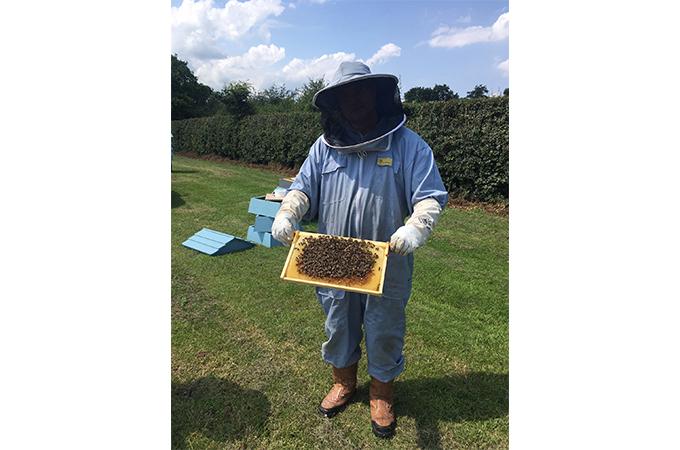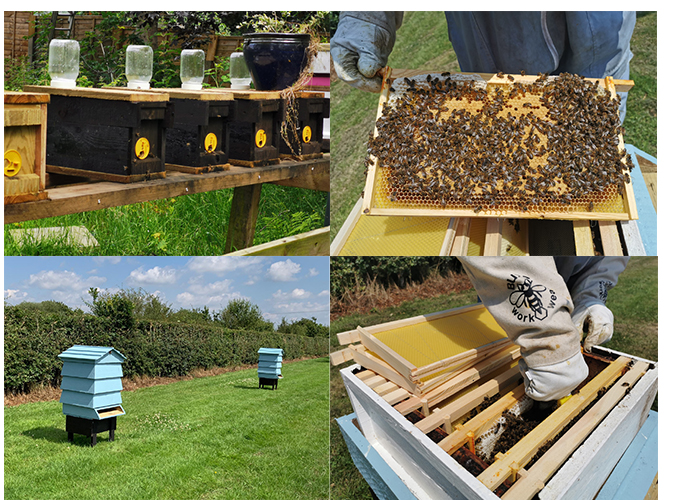Exciting program of bee breeding taking place at Stublach
At Storengy UK's Stublach site, an exciting programme of bee breeding is taken place.

At Storengy UK's Stublach site, an exciting programme of bee breeding is taken place. Due to the large size of the site and the controlled access, the careful introduction of native bees will enable bees to be bred on site for distribution across Cheshire and beyond.
On the entrance road are two of the classical shape of hive known as the WBC. The initials stand for William Broughton Carr who kept bees in Cheshire and Liverpool and developed the outer hive concept to keep the bees dry against the Cheshire weather. Nothing changes in 130 years! The WBC hive was the most popular hive in the UK 100 years ago but, because it has an inner and outer shell, it is much more expensive than the typical hives seen today. Part of the hives and most of the hive stands were made from repurposed wood from the Stublach site.

There is a number of 'breeder' hives around the site. These contain native bees in what are known as National hives. These hives look more box-like. The hives are hand made locally in Northwich, often using waste wood kindly donated by Storengy UK and other local companies. The breeder hives have normally functioning colonies inside and the aim is to regularly take some eggs and young larvae to make more Queens on site. The process is very manual and sustainable - it is somewhat akin to donating blood in that the donor has time to fully recover between sessions and a number of checks are done before the next donation is taken.
The bees will be bred on site and open-mated. That means that the virgin Queen will be free to fly to mate with local drones (boy bees). To keep the risks down of interbreeding a number of hives are needed on site. A larger number of hives also means that the drones will most likely come from one or more of the hives on site rather than from some unknown strain of local bee.
The nature of beekeeping follows the sunshine and warmth. Bees are cold-blooded and do not often venture out in temperatures below 10 degrees Centigrade. The warmer the weather, the more likely you are to see bees. In the winter time they cluster in the hive to keep warm and feed on their honey reserves diligently brought in over the previous summer. Good beekeeping allows the bees to produce a healthy surplus of honey after their second year and this surplus can be removed for human consumption.
At Stublach, with the bee breeding programme, much of the honey excess honey will be diverted to feed very young colonies that are produced for the newly mated Queen to head up.
Karl Colyer from Bees in our community
Key facts
A full colony can contain up to 50,000 bees
In the summer, worker bees only live for around 6 weeks
The Queen will lay 1,000+ eggs a day and eats twice her body weight each day
A teaspoon of honey is the lifetime's work of 12 bees
The bees on site are native to the UK. The scientific name is Apis Mellifera Mellifera but they are more commonly known as AMM's
AMM's are under threat from increasing importation of different races of bees who interbreed with the local bees changing their temperament, hardiness, production and breeding patterns.
To make one pound of honey requires 50,000 miles of flying and visiting 2,000,000 flowers.
If you would like to know more about bees and bee keeping visit: https://www.bbka.org.uk/
